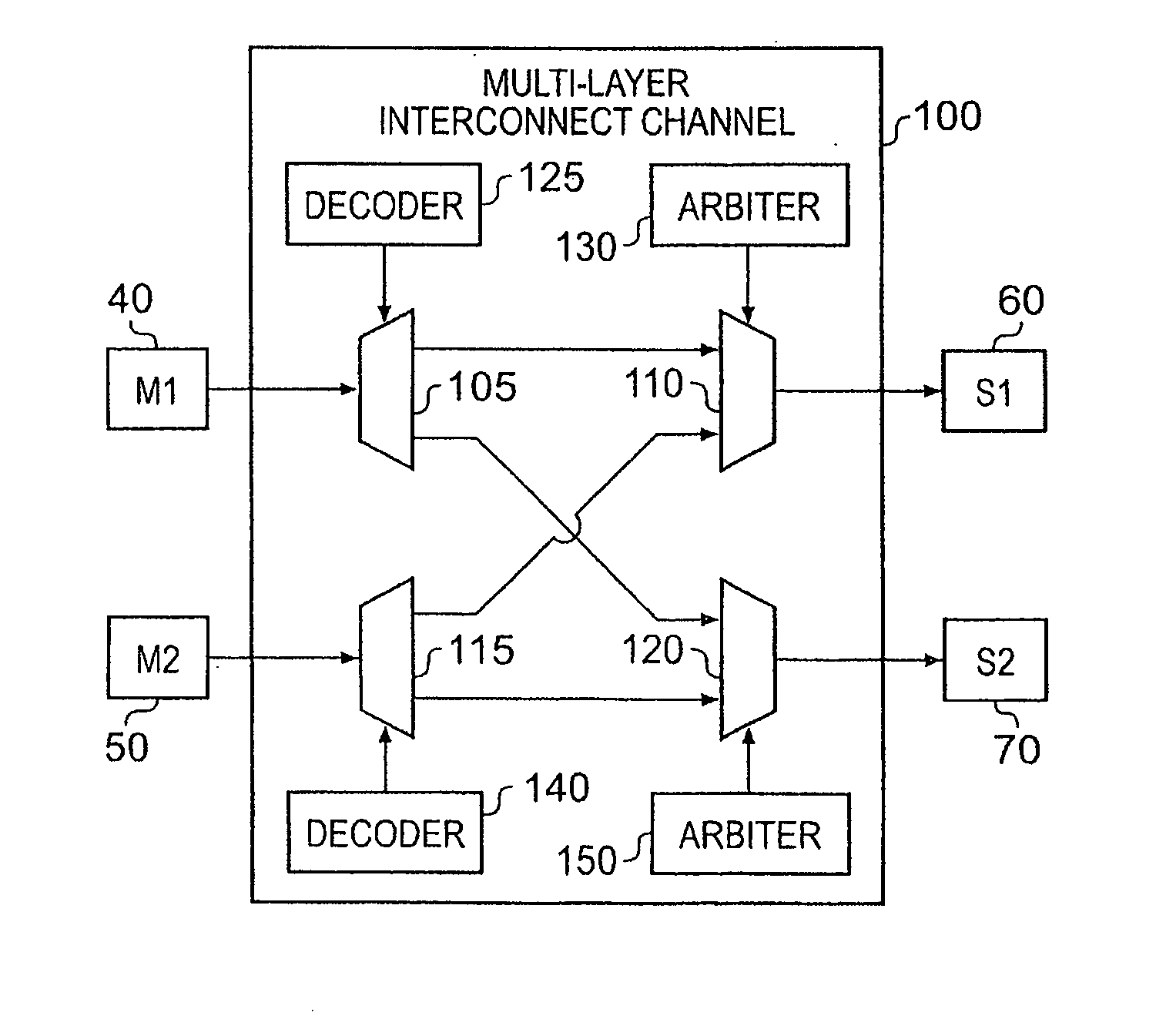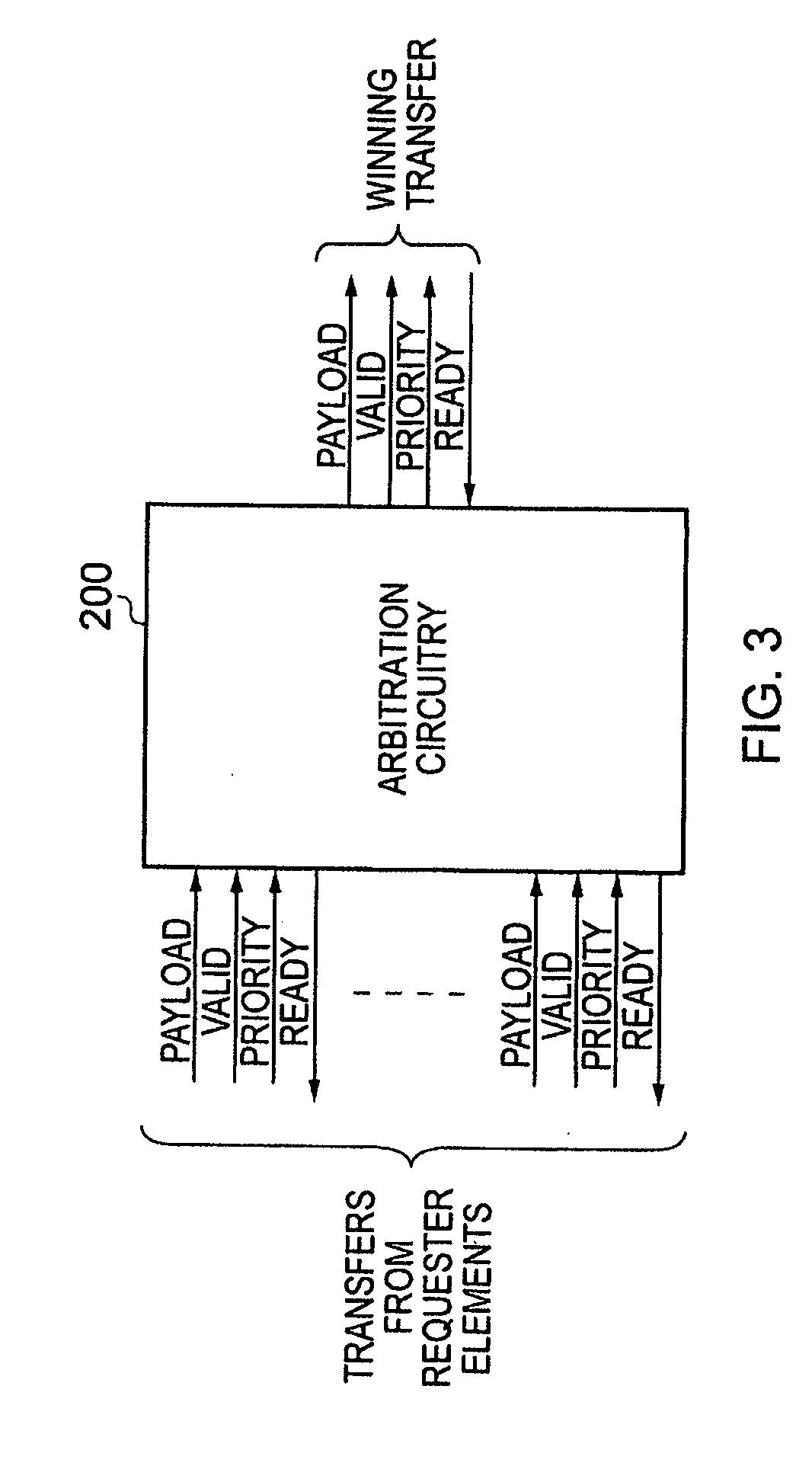Data processing apparatus and method for arbitrating access to a shared resource
a data processing apparatus and resource technology, applied in the field of data processing apparatus and method for arbitrating access to a shared resource, can solve the problems of lack of flexibility in the above-mentioned techniques, and achieve the effect of providing a great deal of flexibility in the arbitration mechanism and simplifying the design of the relative priority ordering circuitry
- Summary
- Abstract
- Description
- Claims
- Application Information
AI Technical Summary
Benefits of technology
Problems solved by technology
Method used
Image
Examples
Embodiment Construction
[0047]The arbitration circuitry of embodiments of the present invention can be used at any location within a data processing apparatus where a plurality of requester elements are contending for access to a shared resource, for example a shared slave device, a shared connection path, etc. By way of illustration of one particular embodiment of the present invention, a data processing apparatus will be considered having a plurality of master devices coupled via interconnect circuitry with a plurality of slave devices. Interconnect circuitry typically provides a plurality of connection paths for coupling the various master devices and slave devices, and the way in which the various transfers of each transaction are routed via those connection paths will be dependent on the bus protocol employed within the interconnect circuitry.
[0048]One known type of bus protocol is the non-split transaction protocol, where there is a fixed timing relationship between the address transfer of a transact...
PUM
 Login to View More
Login to View More Abstract
Description
Claims
Application Information
 Login to View More
Login to View More - R&D
- Intellectual Property
- Life Sciences
- Materials
- Tech Scout
- Unparalleled Data Quality
- Higher Quality Content
- 60% Fewer Hallucinations
Browse by: Latest US Patents, China's latest patents, Technical Efficacy Thesaurus, Application Domain, Technology Topic, Popular Technical Reports.
© 2025 PatSnap. All rights reserved.Legal|Privacy policy|Modern Slavery Act Transparency Statement|Sitemap|About US| Contact US: help@patsnap.com



